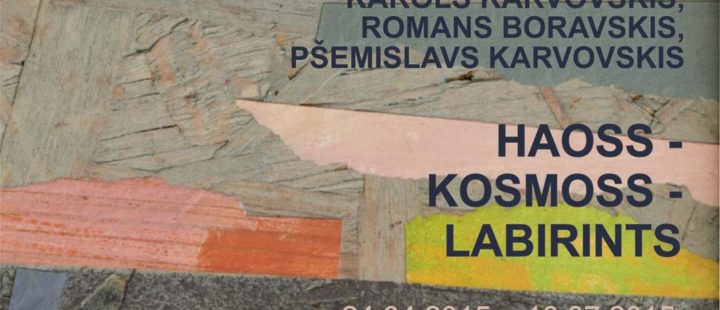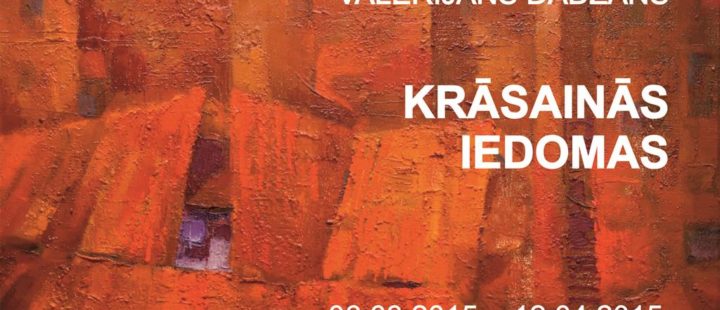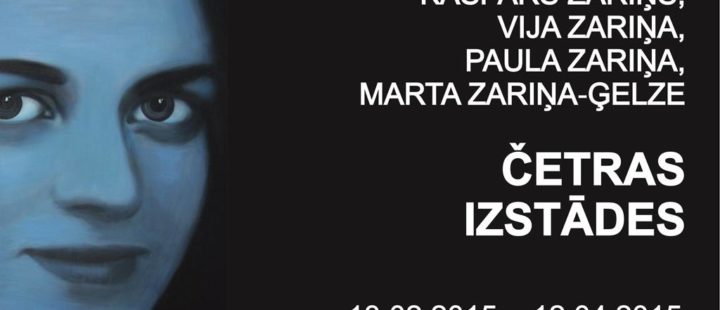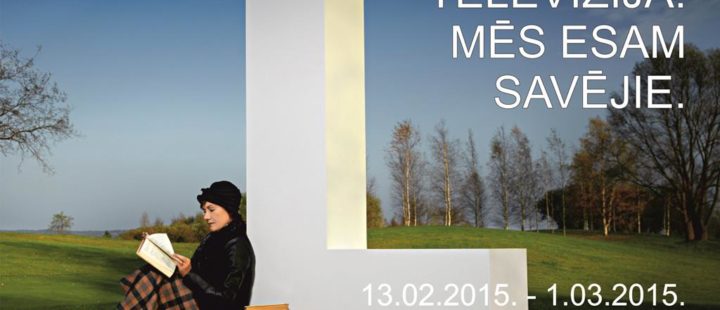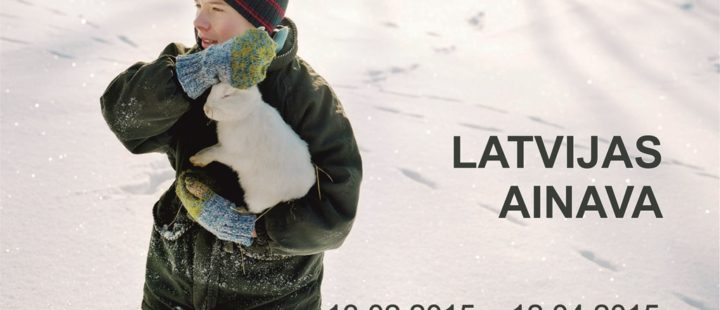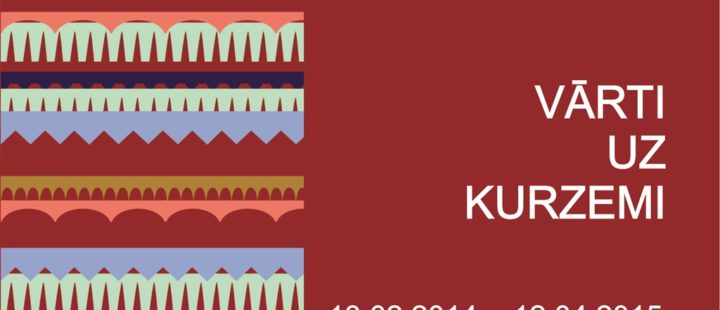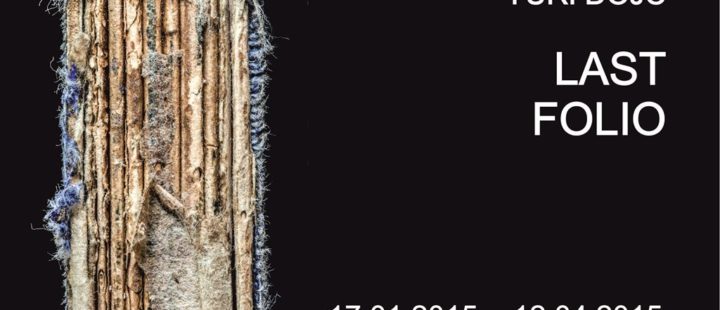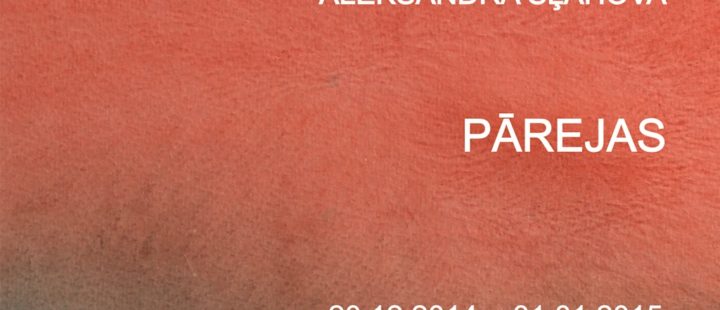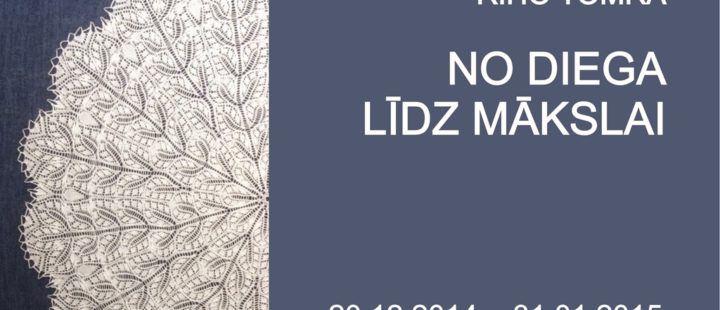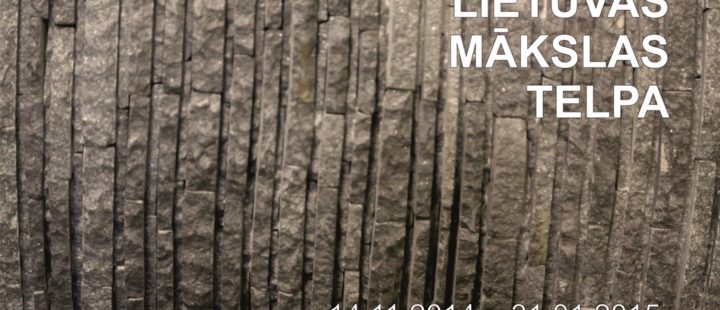Archive
Chaos – Cosmos – Labyrinth KAROL KARWOWSKI ROMAN BORAWSKI PRZEMYSLAW KARWOWSKI
- - 30.03.2015
Chaos – Cosmos – Labyrinth
Karol Karwowski
Roman Borawski
Przemyslaw Karwowski
Abstractionism - whether in its psychological and individualistic “hot” form, or in the “strict”, geometric one, sometimes dedicated to the creation of social utopias - does not solely consist in an abstraction from the depiction of objects, but also from the merely apparent, the visible and the invisible, chaos, and the spiritual world. A common denominator of abstract art is the artists' search for archetypes, so as to bring order to chaos. For this reason we can assume - and such an assumption is very comforting - that beyond this chaos we can find a sacred geometry, when, looking at the big picture, we can distinguish in a stream of events the regularity of some particular elements. The timeless intuition of artists is also reflected in contemporary science, be it in the self-repeating form of the Mandelbrot set (fractal geometry) or in Lorenz's meteorological theory, which defines chaos as a sphere of “seemingly random and unpredictable behavior that nevertheless proceeds according to precise and often easily expressed rules”. In art there are no neutral or “innocent” forms, unaffected by anything else's meaning and thus truly abstract.
This thought was precisely expressed by Kandinsky in his treatise Concerning the Spiritual in Art (1912). Rothko was articulating this idea when he declared: “I'm not an abstract artist… I'm not interested in the relationship of colour or form or anything else. I'm interested only in expressing basic human emotions - tragedy, ecstasy, doom, and so on”. Valerijans Dadžāns „COLORFUL FANTASIES”
- - 02.03.2015
COLORFUL FANTASIES
Valerijans Dadžāns was born on February 11, 1932, in Abrene district, Viļaka civil parish, he died on March 25, 2012, in Jelgava. In 1953, he graduated from the Faculty of History at Latvian State University. Since 1953, he had been a teacher at Atašiene secondary school, Vircava secondary school, Jelgava boarding-school, at school in Jugla sanatorium; he had been a research associate of a former Revolution Museum (at present – Latvia’s War Museum). He was a self-taught painter and had studied painting also privately. He also was a metal craftsman and stage designer in Jelgava music school. From 1965 he began participating in exhibitions. His solo exhibitions have been held in the gallery “Jāņa sēta”, Riga (1993), Ģ. Eliass Jelgava History and Art Museum (1993, 2002), J. Čakste museum “Auči” (2000, 2001 2002), in Stuttgart, Germany, (1994), in Nashville gallery, USA, (2002). The memorial exhibition was held in Ģ. Eliass Jelgava History and Art museum and in the gallery “Antonija”, Riga (2013). He was a member of Jelgava Artists Association since 2009. FOUR EXHIBITIONS – Vija Zariņa, Kaspars Zariņš, Paula Zariņa and Marta Zariņa-Ģelze (1987-2014)
- - 02.02.2015
FOUR EXHIBITIONS –
Vija Zariņa, Kaspars Zariņš, Paula Zariņa and Marta Zariņa-Ģelze (1987-2014)
Project FOUR EXHIBITIONS consists of four individual solo exhibitions. Artists’ biographies are unmistakably related, because they are family members, but simultaneously they are absolutely independent in their creative searching. And this fact is to be considered the biggest challenge of the project – in both the expositions and interpretation, to keep a reasonable distance from the family sentiment, from the sentiment of the Zariņi family and devote all the attention to art only. “Portraits” by Vija Zariņa, “Symptoms” by Kaspars Zariņš, “Awareness” by Paula Zariņa and “Collection of Tears” by Marta Zariņa-Ģelze are independent solo exhibitions, each with its own creative task and story told by the author.
It seemed wrong to organize FOUR EXHIBITIONS in Daugavpils Mark Rothko Art Center without mentioning Mark Rothko’s art. Therefore the description of each exhibition begins with some quote devoted to Mark Rothko. However, it should be said at once: the exhibition does not make any attempt to conjoin the four artists with Mark Rothko, its task is not to prove the non-existent influences. Each of the authors of FOUR EXHIBITIONS has his own and individual aims in art, nevertheless art can be discussed in comparison and contexts. The territory which is common for art, independent of author’s individual aims, is not techniques, themes and styles, but rather metaphysics of art or its spirit. On this territory, amazing interfaces emerge, and FOUR EXHIBITIONS show them to the viewers. “TELEVISION. WE ARE YOUR OWN PEOPLE.”
- - 26.01.2015
TELEVISION. WE ARE YOUR OWN PEOPLE.
It began in 1954 as an inquisitive adventure – modish and unusual. Now, more than half a century we are together. Through complicated times of oppression, through so diverse years of independence until today. We are together. Our values are RESPONSIBILITY, EXCELLENCE, INDEPENDENCE. Our vision – to be a responsible, independent and excellent company which INSPIRES, INFORMS, EDUCATES and ENTERTAINS its viewers all over Latvia.
We – through hopelessness, expectations, through spitefulness and Awakening. We – through lessons of freedom, horrible nightmares and anguish, stumbling and rising, to always go further. Our television shows what is essential, makes you think and is always with you. We are your own people.
Yours Latvian Television
The author of photographs, Valts Kleins:
“LTV is stories about life we are living, and in which we are searching for reliable landmarks to have the answer to what and who we are. The value and credibility of these stories are created by people-personalities with broad mental vision, by those who are free from seeking for the only verity. Looking at and listening to them we discover the diversity of the world for whose development anyone’s opinion is necessary. Yours – too.” “Latvian Landscape”
- - 21.01.2015
Latvian Landscape
In this exhibition, five Latvian photographers (Arnis Balčus, Reinis Hofmanis, Alnis Stakle, Iveta Vaivode and Ilze Vanaga) and five scholars (Sergejs Kruks, Klāvs Sedlenieks, Kārlis Vērpe, Laine Kristberga and Ivars Austers) have co-created a unique interdisciplinary study of contemporary Latvian landscape. Since 2013, they have worked in pairs (scholar/photographer) to create five semantically linked series of photographs and five articles, which combine to approach a specific topic through double means of photographic narrative and text. The overarching theme of the exhibition is landscape, which is construed as a surface for contemplative viewing, a stage for a quaint or ordinary event and, beyond any doubt, a catalyst for an individual’s becoming who they are only when embraced by a particular landscape.
Nowadays, to the overwhelming majority of people observing a landscape, whether through actual presence or by mediation on an image, is a common enough process as they pass time by gazing through the window of public transport, explore the content of digital or printed media, look out of one’s bedroom window, etc. Yet, one cannot and was never able to experience genuine natural landscape. Even remote natural parks untouched by civilization or desert-like sunsets on a remote beach will always have a postcard look or appear as images from a commercial advertisement, inevitably loaded with culturally coded meanings. Our understanding of the observed landscape is always psychologically and/or socially constructed, which in most cases also determines our preconceptions, feelings and ideologies about the essence of the picturesque and the sublime fundamental elements of landscape. „THE GATE TO KURZEME”
- - 21.01.2015
THE GATE TO KURZEME
(A travelling exhibition of the 2014 Art and Poetry Days in Kurzeme)
One of the traditions characteristic of Kurzeme is to organize Kurzeme Art and Poetry Days every other year, done already for the tenth time (since 1999). Every time, the festival is organized by some of a bigger town of Kurzeme. This year, the artists of Tukums joined their forces with writers and held a joint art and poetry festival. The artists created art works where poetry and art were merged into a united synthesis (a video “Pretī” [Opposite], poets’ dedications to art works “Readings of the Exhibition” etc.). The festival was aimed at demonstrating the latest achievements of Kurzeme artists and writers, their joint analysis of processes and at setting aims for the future.
Consequently, the exhibition “The Gate to Kurzeme” was organized, and it included art works created by artists from towns and cities (Liepāja, Ventspils, Saldus, Talsi, Tukums, Kandava, Aizpute), from seaside villages (Saunags, Vaide, Kolka, Kaltene), as well as from other places of Kurzeme. It incorporated and joined various kinds of art and different generations of artists, thus showing art tendencies typical of this region. A special collection from this exhibition was assembled for presenting in Daugavpils Mark Rothko Art Centre in February, 2015. It will give an insight about art processes where artists draw their inspiration in Kurzeme. YURI DOJC “LAST FOLIO”
- - 21.01.2015
YURI DOJC
LAST FOLIO
No foreign sky protected me,
no stranger´s wing shielded my face.
I stand as witness to the common lot,
survivor of that time, that place.
Anna Akhmatova / Requiem 1935 ‐ 1940
Yuri Dojc about his exhibition:
In January 1997, at the funeral of my father I met a remarkable woman, Mrs Vajnorska.
She was one of the thousand or so girls, who in early 1942 boarded the very first train to Auschwitz.
She spent three years there, lost her entire family except for her brother. She told me of her daily home visits to others who survived like she did.
I asked her if I could accompany her on her daily rounds. She agreed.
And so I began photographing these people and the world they live in.
30 L A S T F O L I O Y U R I D O J C
August 1968, Soviet tanks occupy Czechoslovakia and Yuri’s status of a summer
student in London changes overnight to one of a refugee. A year later he lands in Toronto where he still lives.
Four decades later Yuri Dojc is a major figure on the global photographic scene. He has earned considerable recognition for both his commercial and artistic ouvre. His work ranging from portraits of Canadian War veterans to cityscapes is exhibited and
published regularly. His recent work in Rwanda has appeared in the French daily Liberation under the dramatic headline of “Landscape of Genocide”. Aleksandra Šļahova “Transitions”
- - 10.12.2014
Aleksandra Šļahova
"Transitions"
Artist and art teacher Aleksandra Šļahova (1948) is a personality, who with her works, her attention, clarity and brightness speaks to everyone, inviting for conversation and common work. With strength and sensitivity nursed works that are created in watercolor, enclose decorative, stylized and zoomed nature subjects, form and phenomenon study. In watercolors dominate characteristic to Alexandra color purity, their contrast and harmony that are cherished scrupulously and successively from an idea to the result in material. The author captures simple things in the nature and life in general, seeing and transforming the most valuable edges, and reflects the perceived shape for our view in a special zoom. A number of works have been created in a stylistic mood, expressing her personal attitude and feelings, focusing on what is happening that can be felt in every part of the watercolor layers, forming the composition story.
Each work has special and imperceptible at first sight, the philosophy of work and its psychological character. Watercolors are bright, symbolic and at the same time laconic magnets that attract all of us and every individual, hearing, seeing the depth of work and uniqueness. Riho Toomra “From Thread to Art”
- - 10.12.2014
Riho Toomra (Estonia) “From Thread to Art”
At the beginning of the last century German lace knitting was taking a new direction. Rather than repetitions of motifs based on Tyrolean and Bavarian folk traditions, fashion dictated more complicated patterns.
This technique was further developed culminating in state-of-the-art creations by a man who was later known as the Great Master of Lace Herbert Richard Niebling (20.12.1903-15.05.1966).
He learned to knit at an early age and devoted his whole life to this amazing technique, developing it and striving for perfection.
While the traditional motifs were knitted from memory, the complicated new patterns needed to be written down. The systems of the signs developed and by the 30s Niebling had created a simple and universal set of symbols. So the patterns were widely disseminated in
magazines and hobby knitters started to copy the designs. After surviving WW II, he proceeded to create knitted patterns, finding inspiration from the form and structure of the flowers in his garden and also the unusual plants that he collected on his travels.
The laces knitted by him are gone with the wind, but hundreds of his fantastic patterns with their filigrane beauty keep amazing people even today. Exhibition of Estonian artist Riho Tomra in the Rothko Centre is dedicated to 111th anniversary of the Great Master. “LITHUANIA ART SPACE”
- - 19.11.2014
"LITHUANIA ART SPACE"
Art is directly linked with space which embraces it and which submits itself to art works and processes. Quite frequently invisible, it creates the general image of a small street, block, and town or even of the whole country. Art cannot be viewed separately – it interweaves architecture, design and other spheres, which together form the world embracing us. Art is simultaneously both a witness to history and its creator – being directly or indirectly linked with political and social processes of everyday life, it can act not only as an objective detached observer, but is able also to make an impact on everyday processes, because any manifestation of an individual creativity emerges from artist’s own personality, and this makes a direct impact on the identity of culture and the space that belongs or has been lent to it.
Just like in other Eastern Europe and Post-Soviet countries, in Lithuania, too, the development of culture is related to global political and economic processes. Moreover, the geographical location of Lithuania has always been a contributory factor to the influence of various great powers and cultures on its territory – Lithuanian national art has been forming and developing under these conditions.
The identity of the new state, as well as its cultural, social, economic and political life, began to develop after World War I in the then capital Kaunas. The 30s of the 20th century were the period of renaissance in Lithuanian art, and related to the spread of avant-garde art in Europe, to which the Lithuanians, in their turn, managed to impart a specific link with the traditional folk art, which is preserved strong up to the present time. 
